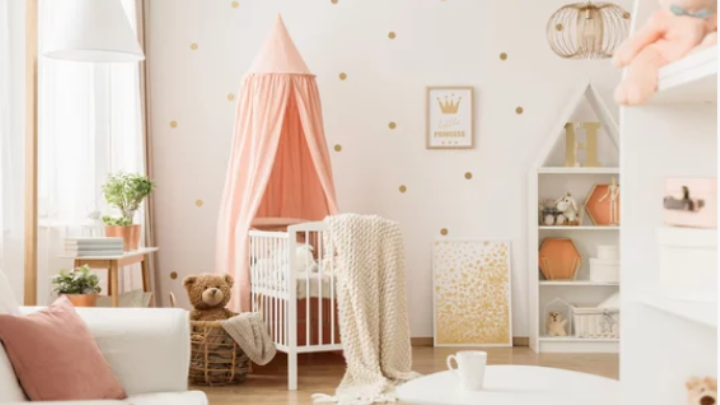One of the first things you'll do as a new parent is set up your baby's nursery, and part of that process involves buying baby furniture.
It can be difficult to decide what furniture you actually need for your baby's nursery, so let's take a look at For Your Little One’s tips on how to make the best buying decisions for your family!
Before you start shopping for baby furniture, it's important to plan and do some research. Consider the amount of space you have, the style you want for the room, and your budget.
When planning the layout of your baby's nursery, do some research. Look at nursery ideas in magazines and online to help you decide on the style you want. Remember that the nursery is primarily for you, the parent, as your baby won't remember the colors or organization of the room. So whether you want to make a bold statement with the style or keep it simple, it's up to you!
Tip: If you have limited space in your baby's nursery, consider a mini crib as a space-saving option!
Once you have done your research and started planning, you might have several ideas you love. But before you start buying furniture, there are a few questions you should ask yourself.
Questions to consider before making a purchase:
- How much space do I have? This is one of the most important factors to consider when buying furniture for your baby's nursery. The size of your space will determine the size of the crib and whether you can accommodate a dresser and changing table. If space is tight, you may need to get creative with multi-functional furniture.
- Take measurements of the room before buying anything and consider the play and walking spaces in your design plan. It's important to ensure that your nursery furniture fits comfortably in the space without overcrowding it.
- Safety should always be a priority. Keep the furniture, especially the crib, away from heat sources. Avoid overcrowding the room with too much furniture and ensure the crib is a safe distance from the door, windows, electric outlets, power cords, light switches, and vents. Cover outlets and keep cords out of your baby's reach. Also, make sure the crib is not too close to other nursery furniture to prevent your baby from using them as an escape route once they start moving around.
The above measures are just a few steps you can take to ensure your baby's safety in the nursery.
Now that you have considered space and safety, let's discuss the essential pieces you actually need.
What basic items do you need? This can be a challenging question because your budget also plays a role in your purchasing decisions.
Most nurseries have the following basic furniture pieces:
- Crib
- Dresser
- Changing table
- Closet or storage space for hanging clothes
- Nightstand
- Diaper bin
Do you need a lot of closet space? Closet space is also something to consider when thinking about nursery furniture. Even though your baby's items may seem small, they can take up a surprising amount of space.
If your room has a walk-in or large closet, you're in luck, and you probably won't need to worry too much about fitting everything you need.
However, if you have limited closet space, consider investing in an armoire. This type of furniture usually includes drawers, shelving space, and an area to hang clothes. An armoire is a great investment that can last throughout your child's teen years and even be passed down to future siblings.
Should you choose furniture that grows with your child? When your baby is little, you may not think much about furniture getting damaged. But as they grow into the toddler phase and become more active, nursery furniture tends to take a beating.
Most parents don't have the resources to change furniture frequently. That's why it's important to invest in quality furniture with sturdy construction. Look for features like solid hinges and knobs on cabinet doors that can withstand an active child. Consider drawers with reinforced corners and sturdy glides that won't easily come off the track with repeated use.
Quality nursery furniture tends to be more expensive, but having durable pieces provides peace of mind and long-term value.
What is your design aesthetic? While your baby won't remember the details of their nursery, choosing a design that is calming for them and enjoyable for you is important. You'll be spending a lot of time in this space once your baby arrives.
In addition to considering the basic items you need, focus on things that bring you joy as well. Think about colours that help you feel calm, whether you prefer wallpaper or paint, and your preference for dark or light wood pieces. Consider whether you lean towards a vintage or sleek, modern design.
We've shared some helpful articles on nursery design in the "Plan and Research" section of this guide. After reading them, take some time to determine the type of nursery you would truly like to create.
Now that you've done all the planning and research, it's time for the fun part—buying your nursery furniture!
Creating a wonderful space that both you and your baby will enjoy involves various considerations. Check out a wide range of Baby Furniture here at For Your Little One!



